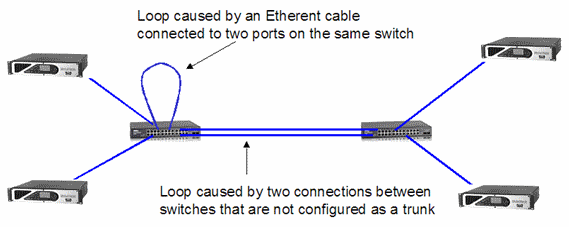Presence of excessive network traffic, also known as a data storm, can cause a stack overflow to occur. A data storm can be caused by the presence of a loop in the network. Loop problems can be more acute in larger networks and in networks that contain gigabit Ethernet links. A data storm can also be caused by malfunctioning equipment in rare cases.
Some devices will transmit multicast data in normal operation. In a large network, if many or all devices on the net do so by coincidence at the same time, a condition similar to a data storm can occur and have similar consequences for a brief instant.
To put it in audio terms, a network loop is analogous to an audio feedback loop. The screech one hears in audio feedback is due to continuous positive reinforcement of the signal. A network loop causes a similar positive reinforcement of the data. Data packets are replicated and increase in quantity with each hop through a switch until all available network bandwidth is consumed.

Many Ethernet switches contain some variant of the Spanning Tree Protocol (STP, RSTP or MSTP) that detects and logically removes loops. Standard STP should not allow a connection to be made until it is sure that the connection will not cause a loop. MSTP and RSTP can behave a little differently. If a new connection is made through a port that the protocol previously considered to be an edge port. (i.e. it cannot be connected to another switch), then the port will be immediately enabled. If this connection is such that it can create a loop, then a data storm can occur. Explicitly setting ports within an RSTP/MSTP managed switch to be edge or bridge ports, per their usage, may alleviate this problem.
|
See also Verification of the problem - all conditions will be present Commonly used fault tolerant techniques for CobraNet networks |